Angus I. Kirkland
On Overlap Ratio in Defocused Electron Ptychography
Feb 02, 2025Abstract:Four-dimensional Scanning Transmission Electron Microscopy (4D STEM) with data acquired using a defocused electron probe is a promising tool for characterising complex biological specimens and materials through a phase retrieval process known as Electron Ptychography (EP). The efficacy of 4D STEM acquisition and the resulting quality of EP reconstruction depends on the overlap ratio of adjacent illuminated areas. This paper demonstrates how the overlap ratio impacts the data redundancy and the quality of the EP reconstruction. We define two quantities as a function of the overlap ratio that are independent of both the object and the EP algorithm. Subsequently, we evaluate an EP algorithm for varying overlap ratios using simulated 4D STEM datasets. Notably, a 40% or greater overlap ratio yields stable, high-quality reconstructions.
Compressive Electron Backscatter Diffraction Imaging
Jul 16, 2024Abstract:Electron backscatter diffraction (EBSD) has developed over the last few decades into a valuable crystallographic characterisation method for a wide range of sample types. Despite these advances, issues such as the complexity of sample preparation, relatively slow acquisition, and damage in beam-sensitive samples, still limit the quantity and quality of interpretable data that can be obtained. To mitigate these issues, here we propose a method based on the subsampling of probe positions and subsequent reconstruction of an incomplete dataset. The missing probe locations (or pixels in the image) are recovered via an inpainting process using a dictionary-learning based method called beta-process factor analysis (BPFA). To investigate the robustness of both our inpainting method and Hough-based indexing, we simulate subsampled and noisy EBSD datasets from a real fully sampled Ni-superalloy dataset for different subsampling ratios of probe positions using both Gaussian and Poisson noise models. We find that zero solution pixel detection (inpainting un-indexed pixels) enables higher quality reconstructions to be obtained. Numerical tests confirm high quality reconstruction of band contrast and inverse pole figure maps from only 10% of the probe positions, with the potential to reduce this to 5% if only inverse pole figure maps are needed. These results show the potential application of this method in EBSD, allowing for faster analysis and extending the use of this technique to beam sensitive materials.
In silico Ptychography of Lithium-ion Cathode Materials from Subsampled 4-D STEM Data
Jul 12, 2023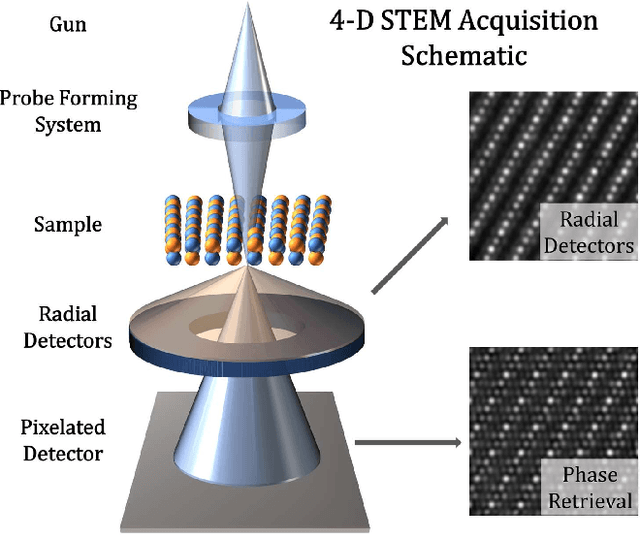
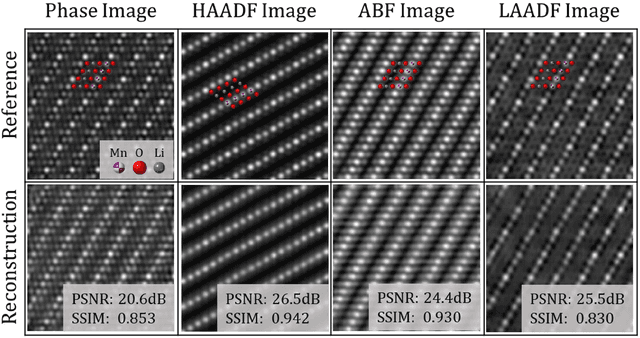
Abstract:High quality scanning transmission electron microscopy (STEM) data acquisition and analysis has become increasingly important due to the commercial demand for investigating the properties of complex materials such as battery cathodes; however, multidimensional techniques (such as 4-D STEM) which can improve resolution and sample information are ultimately limited by the beam-damage properties of the materials or the signal-to-noise ratio of the result. subsampling offers a solution to this problem by retaining high signal, but distributing the dose across the sample such that the damage can be reduced. It is for these reasons that we propose a method of subsampling for 4-D STEM, which can take advantage of the redundancy within said data to recover functionally identical results to the ground truth. We apply these ideas to a simulated 4-D STEM data set of a LiMnO2 sample and we obtained high quality reconstruction of phase images using 12.5% subsampling.
A Targeted Sampling Strategy for Compressive Cryo Focused Ion Beam Scanning Electron Microscopy
Nov 07, 2022


Abstract:Cryo Focused Ion-Beam Scanning Electron Microscopy (cryo FIB-SEM) enables three-dimensional and nanoscale imaging of biological specimens via a slice and view mechanism. The FIB-SEM experiments are, however, limited by a slow (typically, several hours) acquisition process and the high electron doses imposed on the beam sensitive specimen can cause damage. In this work, we present a compressive sensing variant of cryo FIB-SEM capable of reducing the operational electron dose and increasing speed. We propose two Targeted Sampling (TS) strategies that leverage the reconstructed image of the previous sample layer as a prior for designing the next subsampling mask. Our image recovery is based on a blind Bayesian dictionary learning approach, i.e., Beta Process Factor Analysis (BPFA). This method is experimentally viable due to our ultra-fast GPU-based implementation of BPFA. Simulations on artificial compressive FIB-SEM measurements validate the success of proposed methods: the operational electron dose can be reduced by up to 20 times. These methods have large implications for the cryo FIB-SEM community, in which the imaging of beam sensitive biological materials without beam damage is crucial.
SIM-STEM Lab: Incorporating Compressed Sensing Theory for Fast STEM Simulation
Jul 22, 2022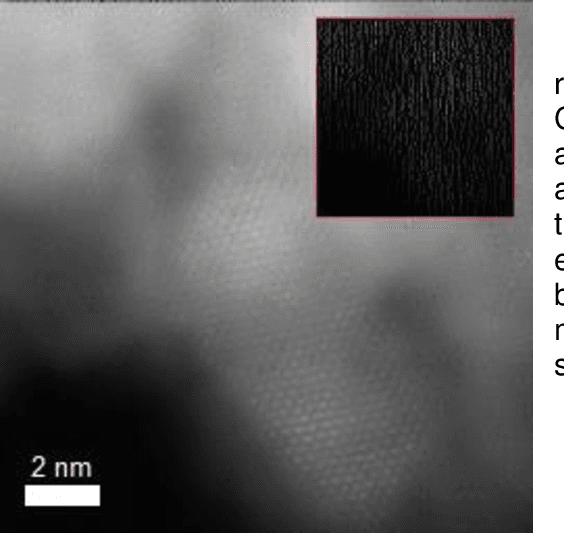
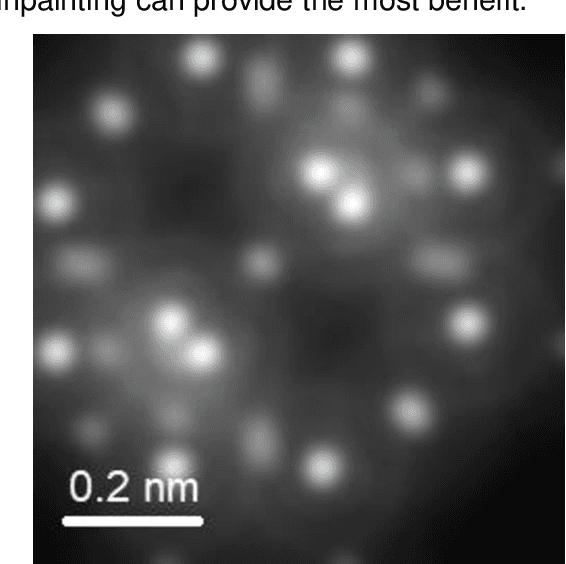
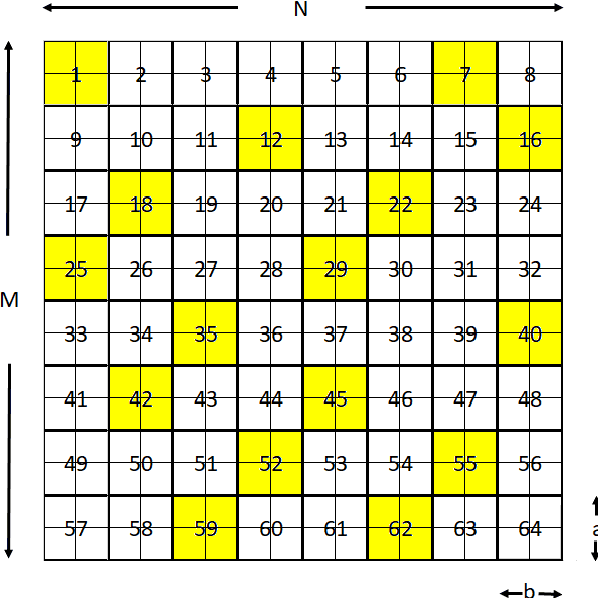

Abstract:Recently it has been shown that precise dose control and an increase in the overall acquisition speed of atomic resolution scanning transmission electron microscope (STEM) images can be achieved by acquiring only a small fraction of the pixels in the image experimentally and then reconstructing the full image using an inpainting algorithm. In this paper, we apply the same inpainting approach (a form of compressed sensing) to simulated, sub-sampled atomic resolution STEM images. We find that it is possible to significantly sub-sample the area that is simulated, the number of g-vectors contributing the image, and the number of frozen phonon configurations contributing to the final image while still producing an acceptable fit to a fully sampled simulation. Here we discuss the parameters that we use and how the resulting simulations can be quantifiably compared to the full simulations. As with any Compressed Sensing methodology, care must be taken to ensure that isolated events are not excluded from the process, but the observed increase in simulation speed provides significant opportunities for real time simulations, image classification and analytics to be performed as a supplement to experiments on a microscope to be developed in the future.
 Add to Chrome
Add to Chrome Add to Firefox
Add to Firefox Add to Edge
Add to Edge